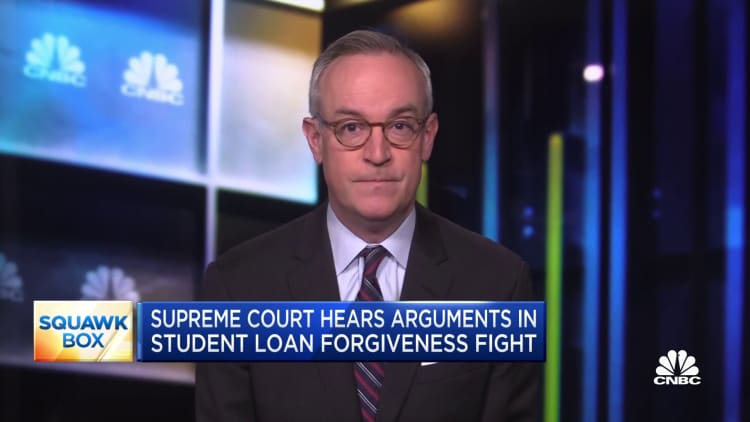
Halfpoint | Istock | Getty Images
As of the latest tally, another 1.4 million Americans have dropped out of college — although some may reenroll if the Supreme Court affirms President Joe Biden’s student loan forgiveness plan and their education debt is forgiven, a new report shows.
Overall, college enrollment declines have begun to level off, but the number of students who started college but then withdrew rose 3.6% in the 2020-21 academic year, according to the National Student Clearinghouse Research Center. There are now more than 40 million students who are currently unenrolled.
More from Personal Finance:
Best colleges for financial aid
How new grads can better their odds of landing a job
This strategy could shave thousands off the cost of college
Another 41% of current college students said they have considered “stopping out,” or putting their education on hold, over the past six months, a new study from Lumina Foundation and Gallup found.
“The number of currently enrolled students thinking about stopping out keeps getting higher — that’s super concerning,” said Courtney Brown, Lumina’s vice president of impact and planning.
Financial obstacles lead many to stop out
Between the high cost of higher education and the strong labor market, students are questioning whether going to college is still worth it, noted Ross Gittell, an economist and president of Bryant University in Smithfield, Rhode Island.
“There’s concern about that investment upfront when the returns are uncertain,” he said.
Among students who recently put their education on hold, most said it was due to financial obstacles, including the costs of programs, inflation and the need to work, the report by Lumina and Gallup found.
“It’s not just about tuition,” Brown said. “The reality is that today’s students work, they may have children or parents to support — there’s an opportunity cost.”

Struggles for those with student debt, no degree
At the very least, the Supreme Court‘s pending decision on Biden’s student loan forgiveness plan will shed more light on the financial burden of college.
Increasingly, borrowers are struggling under the weight of ballooning student debt balances. Today, borrowers owe a combined $1.7 trillion.
For those who start college but never finish, managing such a hefty amount of debt is especially difficult. “It becomes problematic when the student doesn’t graduate or graduate in a timely manner,” Gittell said.
Forgiveness could prompt reenrollment
On the flipside, loan forgiveness would reduce that burden, making it more likely that students would reenroll, according to Brown.
“Loan forgiveness could be a key strategy to bring students who have some college, but no degree, back to finish their coursework,” she said.
Nearly half, or 47%, of students who stopped their postsecondary education before finishing said they would be very likely to reenroll if some or all their student loans were forgiven, the report by Lumina and Gallup also found.
Meanwhile, college is only getting more expensive. Tuition and fees plus room and board, books and other expenses for a four-year private college averaged $57,570 in the 2022-23 academic year; at four-year, in-state public colleges, it was more than $27,940, according to the College Board, which tracks trends in college pricing and student aid.
Next year, some colleges said they will hike tuition even more, citing inflation and other pressures.
Still, many would-be students believe that getting a degree is worth it and continue to borrow to make college possible.
